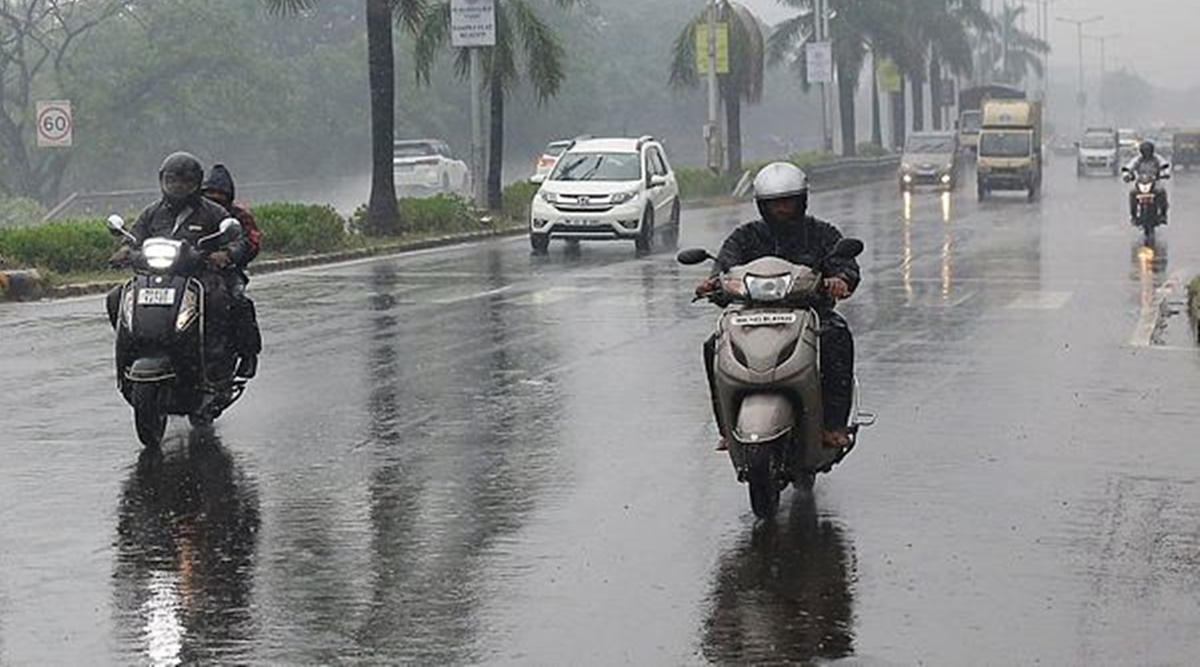Gujarat: 14 people killed due to unseasonal rains

Gujarat: 14 people killed due to unseasonal rains
Unseasonal rains wreaked havoc in Gujarat on Sunday, claiming the lives of at least 14 people, according to a report by Hindustan Times, citing information from the State Emergency Operations Centre (SEOC). The unexpected rainfall triggered various incidents, including house collapses and accidents, resulting in tragic fatalities.
The untimely rain disrupted normal life and caused damage to property and infrastructure across the state. Gujarat, known for its arid climate, witnessed an unusual weather pattern, leading to heavy rainfall in several regions.
The State Emergency Operations Centre is actively involved in managing and coordinating the response to the situation, assessing the extent of the damage, and providing assistance to those affected. The unanticipated nature of the rainfall has raised concerns about the resilience of local communities and infrastructure to such climatic events.
Local authorities are likely to mobilize resources for relief and rehabilitation efforts, including assistance to the affected families and measures to restore normalcy in the affected areas. The incident underscores the importance of preparedness and infrastructure resilience in dealing with extreme weather events, even in regions not historically prone to heavy rainfall.
As the situation develops, ongoing weather monitoring and response coordination will be crucial to address the immediate challenges posed by the unseasonal rains and to implement strategies that enhance the region’s capacity to withstand such events in the future.
Gujarat experienced an unusual weather event on Sunday morning as unseasonal rainfall and hailstones surprised residents across the state. The unexpected change in weather patterns led to widespread precipitation, with some areas witnessing hailstones, a phenomenon not typical for this time of year in the region.
Unseasonal rainfall and hail can have various impacts on agriculture, affecting standing crops and potentially causing damage. Farmers in the region may face challenges in managing the aftermath of the sudden weather change, as their crops could be vulnerable to the adverse conditions.
The unexpected precipitation also disrupted normal life, causing inconvenience to residents and posing challenges for local authorities in managing the unforeseen consequences. Infrastructure, including roads and drainage systems, may have been affected by the heavy rainfall, requiring prompt attention to ensure public safety and prevent further damage.
The State Emergency Operations Centre (SEOC) is likely to play a crucial role in assessing the situation, coordinating response efforts, and providing support to those affected by the unseasonal weather. As information becomes available, authorities may initiate relief and rehabilitation measures to address the immediate needs of the impacted communities.
Unseasonal weather events highlight the importance of climate resilience and preparedness, urging regions to enhance their capacity to adapt to changing climatic conditions. Monitoring and responding to such events become critical to minimizing the impact on agriculture, infrastructure, and communities.
The unseasonal rainfall in Gujarat serves as a reminder of the unpredictable nature of weather patterns and the significance of proactive measures to mitigate the challenges posed by climatic variations.
Unseasonal rains accompanied by hailstones struck various parts of South Gujarat, Saurashtra, and North Gujarat, affecting over 155 talukas. The State Emergency Operations Centre (SEOC) reported a total of 14 fatalities resulting from the adverse weather conditions. Dahod district recorded the highest number of deaths, with three reported cases, followed by two in Bharuch and one each in Amreli, Surendranagar, Mehsana, Botad, Panchamahals, Kheda, Sabarkantha, Surat, and Ahmedabad. All reported human casualties were attributed to lightning strikes.
The SEOC official also indicated that additional data is being collected, and the death toll may increase as a comprehensive assessment is carried out. Unseasonal rainfall and hail can have significant implications for agriculture and infrastructure, and the local authorities are expected to respond promptly to address the aftermath of the unexpected weather event.
These incidents underscore the vulnerability of regions to sudden and unusual weather patterns, emphasizing the need for robust disaster management and climate resilience strategies. Authorities may need to engage in relief efforts, assess damage to crops and property, and implement measures to support affected communities in their recovery.
In the face of unpredictable weather events, communities and authorities must remain vigilant and well-prepared to mitigate the impact on agriculture, infrastructure, and human lives. Climate change is contributing to the frequency and intensity of such events, necessitating proactive measures to adapt to evolving climatic conditions and enhance resilience at the local level.
Unexpected rainfall, accompanied by hailstones, disrupted normal weather patterns in several regions of Gujarat, Maharashtra, and the Konkan area. Besides Mumbai, north central Maharashtra and the Konkan region experienced precipitation. The rainfall is attributed to a robust trough line, bringing rains to Maharashtra, typically limited to north India.
According to the India Meteorological Department (IMD), there are forecasts for fairly widespread light to moderate rains, isolated thunderstorms, and lightning in Gujarat over the weekend (November 25-26). Additionally, the same weather conditions are expected in Maharashtra, Goa, and Madhya Pradesh until Monday (November 25-27). The unseasonal showers were triggered by a fresh western disturbance, identified as a trough in middle tropospheric westerlies.
Hailstorms are a result of raindrops being blown upward into extremely cold areas of the atmosphere, causing them to freeze before falling as hail. The IMD issued a yellow watch over these regions during the forecast period, indicating caution and advising residents to stay updated on weather conditions.
These unexpected weather events underline the influence of atmospheric disturbances on regional weather patterns. The unseasonal rains can have implications for agriculture, especially if the crops are not prepared for such conditions. Authorities and communities must stay alert to rapidly changing weather scenarios and be ready to respond effectively to mitigate any adverse impacts. Climate-related anomalies and their consequences emphasize the importance of robust weather monitoring systems and adaptive strategies to address the challenges posed by unpredictable weather conditions.




